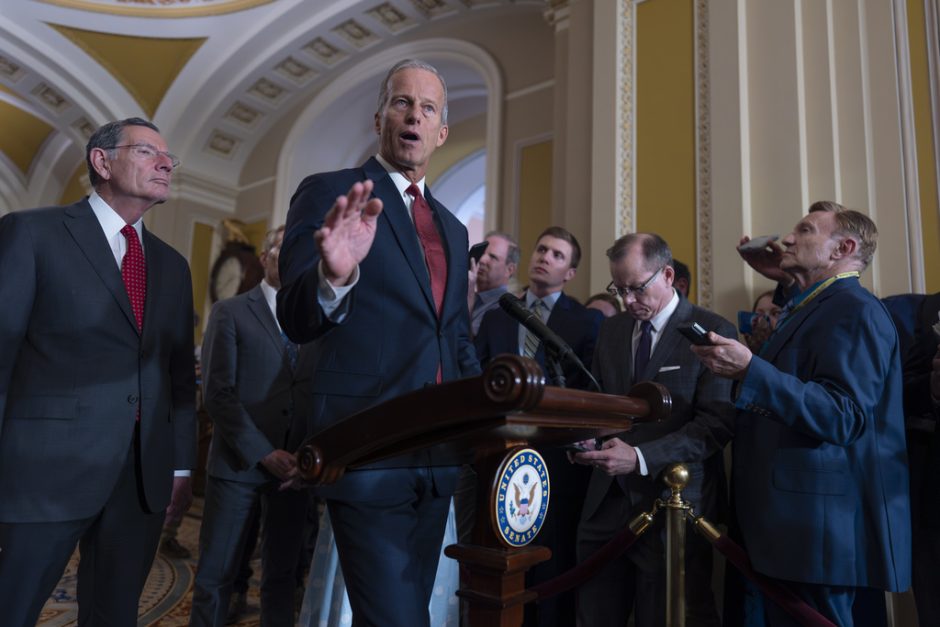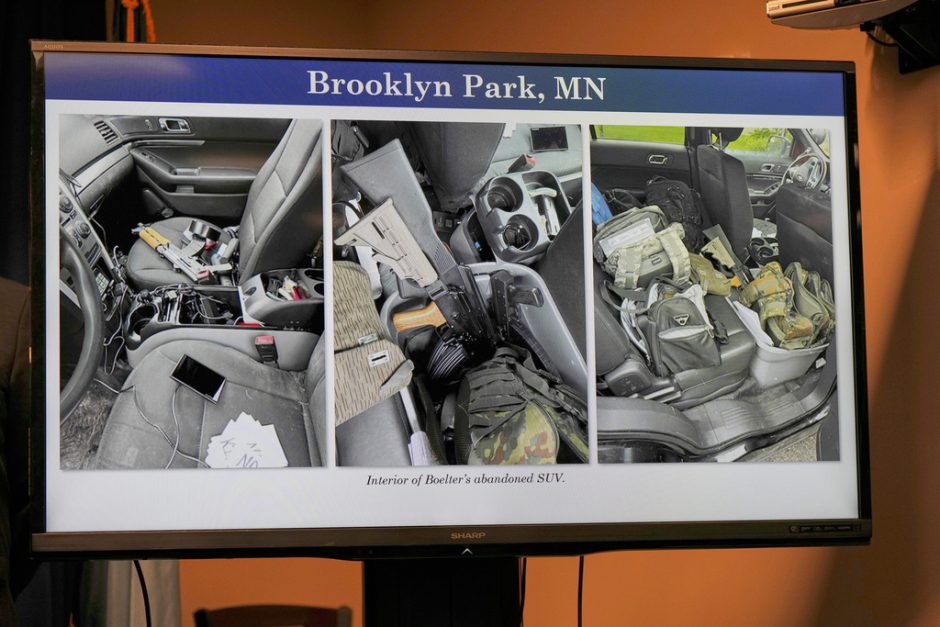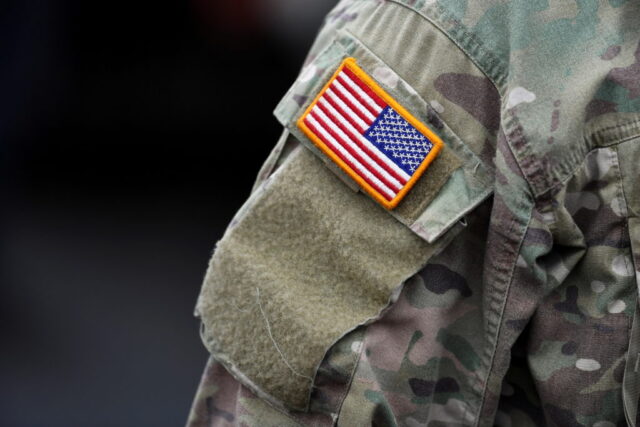“Voluntary” isn’t how U.S. Navy Lt. Rae Timberlake would describe their expected departure from the U.S. military.
“I feel like it’s coercion,” said Timberlake, who is nonbinary and has served in the naval forces for 17 years. They would be staying in if the U.S. military wasn’t starting to remove as many as 1,000 trans service members from its ranks.
It’s a process the Pentagon intended to start earlier this year before a lower court put it on hold. Then the Supreme Court cleared the way for the Trump administration to enforce its ban.
Defense Secretary Pete Hegseth issued a memo last week that gives service members with a history or diagnosis of gender dysphoria 30 days to volunteer themselves for removal. Gender dysphoria is the distress some feel when their bodies don’t align with their gender. Troops who haven’t come forward by that deadline will be involuntary forced out of the service.
Military branches started to release updated guidance on the separations.
Timberlake decided in March to take an offer from the Department of Defense to be honorably discharged. At the time, a Pentagon memo said those who voluntarily departed may be eligible for separation pay at double the rate of those who were involuntarily removed. Anyone who self-identified to the DOD may not be required to pay back bonuses, the memo said.
There have been fewer details on what happens after that 30-day voluntary separation window to service members who have not signed up, Timberlake said.
“I’m going to take the carrot because I don’t want the stick,” they said of their decision. “I don’t want to run the risk of getting a dishonorable discharge, and I don’t want my time in the Navy to be characterized as anything other than honorable.”
Hegseth celebrated the Supreme Court’s decision on social media, writing on X, “No More Trans @ DoD.” In a follow-up video, Hegseth said the Defense Department would “continue to relentlessly pursue the president’s agenda, especially on readiness.”
Trump’s executive order banning trans troops in the military, issued in January, doesn’t use the word “transgender.” It claims that the armed forces have been “afflicted with radical gender ideology.” The president writes that having a gender identity that differs from the sex one was assigned at birth “conflicts with a soldier’s commitment to an honorable, truthful, and disciplined lifestyle.”
With separation orders moving forward, trans service members spoke with PBS News about their time serving in the armed forces and what this decision means for them and the U.S. military. They shared their views in a personal capacity and do not reflect the views of the Defense Department.
Being separated from the military would mean “the closing of one chapter and the beginning of the other, but unfortunately not on my own terms,” said U.S. Army Maj. Kara Corcoran, vice president of SPARTA Pride, a nonprofit that advocates for trans troops.
For Corcoran, who’s been in the armed forces for more than 17 years, her uncertain future is marked by anger.
“I dedicated my life to this country, and I’m being told that I’m not physically or mentally fit, and none of that equates or is true whatsoever,” she said.
‘An open expression of animosity’
Under the Pentagon’s latest guidelines, active duty troops have until June 6 to voluntarily identify themselves to the department. Those in the National Guard and Reserve will have until July 7.
Responding to an inquiry from PBS News, a defense official said the department does not have an exact number of service members diagnosed with gender dysphoria, nor a breakdown of this figure by military service departments.
Not all trans people experience gender dysphoria, nor have a diagnosis.
Earlier this year, under a court order, the Pentagon provided a figure of 4,240 people in active duty, or 0.2 percent of some 2 million service members, who have been diagnosed with gender dysphoria.
The defense official said trans service members who are separated involuntarily “will receive an honorable characterization of service except where the Service member’s record otherwise warrants a lower characterization.”
The official referred PBS News back to the May 8 memo, accompanying DOD statement and Hegseth’s video on social media for additional information on what would happen after the 30-day involuntary separation period.
There are multiple lawsuits against the ban. The federal judges in these cases have noted that the government’s justification for the ban lacks evidence.
U.S. District Court Judge Benjamin Settle in Tacoma, Washington, issued a nationwide injunction that blocked the ban in March. Settle, a nominee of former President George W. Bush, wrote in his 65-page ruling that the government’s arguments weren’t persuasive, “and it is not an especially close question on this record.”
“Any evidence that such service over the past four years harmed any of the military’s inarguably critical aims would be front and center. But there is none,” he wrote.
When issuing a separate injunction days before, U.S. District Judge Ana Reyes in Washington, D.C., wrote that the military ban is likely unconstitutional and is “soaked in animus and dripping with pretext.”
Before the Supreme Court’s decision last week, Hegseth spoke at a special operations forces conference in Tampa. He told the crowd that the Defense Department was “leaving wokeness and weakness behind.”
“No more pronouns,” he said, adding there would be no more climate change “obsessions” or emergency vaccine mandates and “no more dudes in dresses.”
“We are done with that sh*t.”
Then-President Donald Trump in front of the stands filled with Naval Academy cadets during the 2020 Army-Navy football game in West Point, New York. Photo by Brendan Smialowski/AFP via Getty Images
The difference between Trump’s first attempt to institute a trans military ban during his first term and now is “like night and day,” said Shannon Minter, legal director of the National Center for Lesbian Rights.
“Last time there was an attempt to stick to justifying the ban as having medical concerns,” Minter said. Back then, there were some questions about the efficacy and safety of treatments under transition-related medical care if a service member was diagnosed with gender dysphoria, he added.
Now, “there’s just an open expression of animosity,” Minter said. “It’s all over the face of the policy itself and Hegseth is openly voicing hostility towards transgender people at every opportunity.”
In the Supreme Court order that allowed the ban to move forward, the three liberal justices signaled they would have kept a hold on the military ban in place. No explanations from any of the justices accompanied the one-page ruling.
The specter of separations
Timberlake joined the Navy right out of high school at age 17, which required their parents’ permission. They joined for a number of reasons, like wanting more life experience and uncertainty about what to study in college — or whether college itself was the right path. They also wanted to get out of town and “be a part of something bigger than myself.”
“This is the only job I’ve had in my adult life,” they said. “It’s a huge part of my identity.”
Timberlake now doesn’t want to stay at an organization that wants them to leave.
Removing thousands of trans service members will cause a “major gap” in critical skills and capabilities the U.S. military has spent years and millions and billions of dollars developing, said Timberlake, who’s also a spokesperson for SPARTA.
In the short term, they said, this purge of trans troops will add more stress and strain on military units. In the long term, Americans might have a “little less trusted fidelity in their military as a warfighting organization.”
“I think that many Americans are going to question if it truly is a meritocracy — if we truly have the best, most qualified people in place to do the job,” they added.
Chief Petty Officer Ryan Goodell initially was willing to ride out the wave of uncertainty around Trump’s ban.
With more than 13 years of service, Goodell is more than halfway through the 20-year minimum requirement for retirement. A removal means losing out on that milestone. He would also lose his basic allowance for housing.
But other concerns emerged.
Goodell, a U.S. Navy cryptologic technician, re-enlisted in December and received a $19,000 bonus. He grew concerned that if he didn’t opt for voluntary separation, he’d have to pay that back, as well as any other bonuses he received across his time in the military. This fear stemmed from the first Hegseth memo released in February that said the military “may recoup any bonuses” from those taking the involuntary separation path.
Goodell chose the separation offer shortly before the first injunction against the ban was put in place. He’s now waiting to find out what the formal separation date is going to be.
“I want to have a say in where I go for once,” he said of his decision. At least, to wrestle back a little control in an uncontrollable situation.
Support PBS News Hour
Your tax-deductible donation ensures our vital reporting continues to thrive.

















































